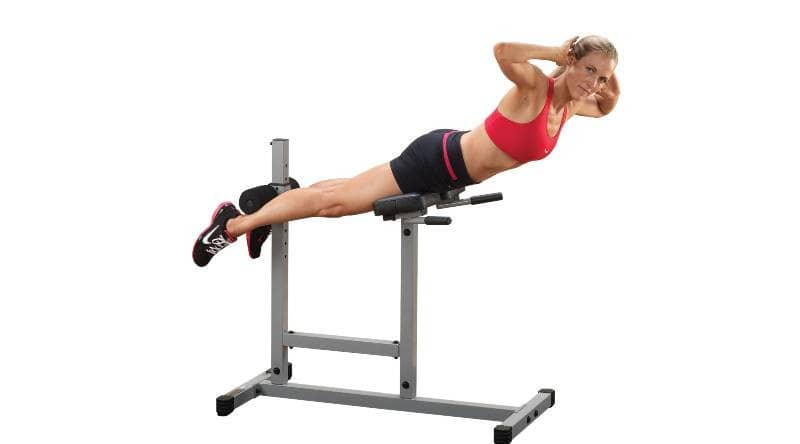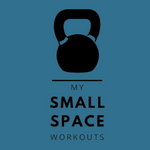Are you considering adding a Roman Chair to your home gym or fitness routine? It’s a popular choice for targeting and strengthening the core muscles, but is it worth the cost? In this article, we’ll explore the benefits and potential risks of using a Roman chair, as well as factors to consider when deciding if it’s the right investment for you. We’ll also provide alternative options for strengthening the core and improving posture. By the end, you’ll have a better understanding of whether a Roman chair is worth it for your fitness goals and budget.

Introduction: What is a Roman Chair and How is it Used?
A Roman chair, also known as a hyperextension bench, is a piece of exercise equipment that is used to perform exercises that target the lower back and core muscles. It typically consists of a padded bench with adjustable leg supports and a backrest that can be angled at various degrees.
To use a Roman chair, you lean forward onto the padded support and slide yourself forward until your ankles are secured under the leg supports. Your upper body will be folded forward. You then lift your upper body up and back towards the ceiling, using your core and lower back and glute muscles to complete the movement. This exercise, called a hyperextension, can be performed with or without additional weight, such as holding a weight plate or using a resistance band.
Roman chairs can also be used for other exercises that target the core and lower back muscles, such as oblique twists, reverse crunches, and leg raises. Some Roman chairs also have additional attachments, such as a leg curl bar or dip handles, that allow for a wider range of exercises.
Benefits of Using a Roman Chair: Improved Core Strength and Posture
If you’re considering adding a Roman chair to your home gym or personal training studio, you may be wondering what benefits it can offer.
As it turns out, there are numerous benefits to using a Roman chair for your workouts. From improved core strength and posture to injury prevention and increased flexibility, this versatile piece of exercise equipment can offer a wide range of benefits for your overall health and fitness.
In this list, we’ll explore seven of the top benefits of using a Roman chair to help you decide if it’s worth the investment.
- Improved core strength: Roman chair exercises are an effective way to strengthen the muscles in your core, including the lower back, abs, and obliques. This can help improve your overall stability, balance, and athletic performance.
- Improved posture: Hyperextensions on a Roman chair can help correct imbalances in the muscles of the lower back and core, which can lead to improved posture.
- Injury prevention: Strengthening the muscles in your lower back and core can help prevent common injuries, such as strains and sprains, that can occur during activities that involve lifting, twisting, or bending.
- Rehabilitation: Roman chair exercises can be an effective part of a physical therapy program to help rehabilitate lower back injuries or conditions.
- Increased flexibility: Roman chair exercises can help improve flexibility in the lower back, which can make it easier to perform daily activities with less strain on the body.
- Greater range of motion: Hyperextensions on a Roman chair can help increase the range of motion in the lower back, which can improve athletic performance and reduce the risk of injury.
- Versatility: Roman chairs can be used for a variety of exercises that target the core and lower back muscles, making them a versatile addition to any home gym or personal training studio.
Potential Risks and Precautions for Using a Roman Chair
While Roman chairs can offer numerous benefits, there are also potential risks and precautions to consider when using one. It’s important to follow proper form and technique to avoid injury, as well as to consult with a healthcare professional or certified fitness instructor before starting a new exercise program.
Some potential risks and precautions to consider when using a Roman chair include:
Strains or sprains: If you overextend or overexert your muscles during a Roman chair exercise, you could strain or sprain your lower back or other muscles.
Muscular imbalances: If you only focus on exercises that target the lower back and core muscles, you may develop imbalances in these muscles. It’s important to also include exercises that target other muscle groups and work on overall body balance.
Incorrect form: If you don’t use proper form when performing Roman chair exercises, you could risk injury or ineffective workouts. It’s important to follow proper technique, including keeping your core engaged and avoiding excessive arching of the lower back.
Inadequate warm-up: It’s important to warm up before using a Roman chair to help prevent injury. This can include light cardio and dynamic stretches to prepare your muscles for exercise.
By following proper technique, warming up adequately, and consulting with a healthcare professional or fitness instructor, you can minimize the risks and optimize the benefits of using a Roman chair.
Factors to Consider When Deciding if a Roman Chair is Worth the Cost
Deciding whether a Roman chair is worth the cost can be a challenging decision. With a price range that can vary from less than a hundred to over a thousand dollars, it’s important to carefully weigh the pros and cons before making a purchase.
In this list, we’ll explore seven factors to consider when deciding if a Roman chair is worth the investment for your home gym or personal training studio.
From your fitness goals and budget to the quality of the equipment and your motivation to use it, these factors can help you determine whether a Roman chair is the right choice for you.
- Your fitness goals: What are you hoping to achieve with a Roman chair? If your primary goal is to improve your core strength and posture, a Roman chair may be worth the investment. However, if you have other goals that can be met with alternative equipment or exercises, you may want to consider those options.
- Your budget: A quality Roman chair is going to cost over a hundred dollars, so it’s important to consider whether the cost fits within your budget.
- The space available in your home or studio: Roman chairs can be quite large, so you’ll need to consider whether you have the space to accommodate one in your home gym or personal training studio.
- Your experience level: If you’re new to exercise or have a pre-existing injury or condition, it may be best to consult with a healthcare professional or certified fitness instructor before using a Roman chair.
- The quality of the equipment: As with any exercise equipment, it’s important to consider the quality and durability of the Roman chair you’re considering. Higher-quality chairs may come with a higher price tag, but they may also last longer and offer a more comfortable and effective workout.
- Your access to alternative equipment: If you have access to other equipment that can help you achieve your fitness goals, such as a stability ball or exercise bands, you may not need to invest in a Roman chair.
- Your motivation and commitment to using the equipment: Even if you decide that a Roman chair is worth the investment, it’s important to consider whether you’ll actually use it on a regular basis. If you don’t think you’ll be motivated to use it consistently, it may not be worth the cost.
My Experience Using The Roman Chair
I’ve been using a Roman chair in my home gym for several months now, and overall, I’m extremely satisfied with my purchase.
One of the main reasons I decided to get a Roman chair was because I spend a lot of time sitting at a desk for work, and I wanted to find a way to combat the negative effects that can have on my posture and core strength.
I’ve found that the Roman chair is a great tool for this purpose – it’s convenient to use in my own garage gym, it’s challenging enough to keep me engaged and motivated, and it’s even fun to use.
That being said, the Roman chair does take up a fair amount of space within my garage gym, and the model I have is somewhat limited in terms of versatility. It’s really only suitable for back extension exercises, so I can’t use it for a wide range of different workouts.
Despite this, I’m still happy with my purchase overall. The benefits I’ve experienced from using the Roman chair – improved core strength, better posture, and the convenience of having this equipment in my own home – far outweigh any negatives.
A full review of the model I own is in progress and will be posted soon.
Alternative Options for Strengthening the Core and Improving Posture
In this list, we’ll explore seven alternative options for strengthening the core and improving posture, so you can find the best fit for your fitness goals and preferences. However, it’s fair to say that nothing in the list hits the muscles of the glutes, hamstring and lower back in quite the same way as the roman chair.
- Planks: Planks are a classic exercise that can help strengthen the core and improve posture. They can be performed using your own body weight or with the addition of weights or resistance bands.
- Stability ball exercises: Using a stability ball can help improve core strength and posture by challenging your balance and stability. There are many different exercises that can be performed on a stability ball, such as ball crunches, leg curls, and push-ups.
- Pilates: Pilates is a form of exercise that focuses on strengthening the core, improving posture, and increasing flexibility. It can be performed using specialized equipment, such as a reformer, or with minimal equipment, such as a mat and small weights.
- Resistance band exercises: Resistance bands can be used to perform a variety of exercises that target the core and improve posture, such as standing oblique twists and bent-over rows.
- Medicine ball exercises: Medicine balls are versatile pieces of equipment that can be used for a variety of exercises that target the core and improve posture, such as Russian twists and plank pikes.
- Bodyweight exercises: There are many bodyweight exercises that can help strengthen the core and improve posture, such as squats, lunges, and push-ups.
If you want a follow-along exercise program that covers the most of the items in this list, check out my review of Metabolic Stretching.
Shape Up Your Lower Body With the Roman Chair
In conclusion, the Roman chair is a valuable investment for anyone looking to strengthen and tone their glutes, hamstrings, and lower back. While it may take up some space in your home gym or workout area, the unique and targeted exercises that can be performed on the Roman chair make it worth the investment. Additionally, the Roman chair is a versatile piece of equipment that can be used by people of all fitness levels, making it a worthwhile addition to any fitness routine. So if you have the space and are looking to improve the strength and definition of your lower body, the Roman chair is definitely worth considering.

